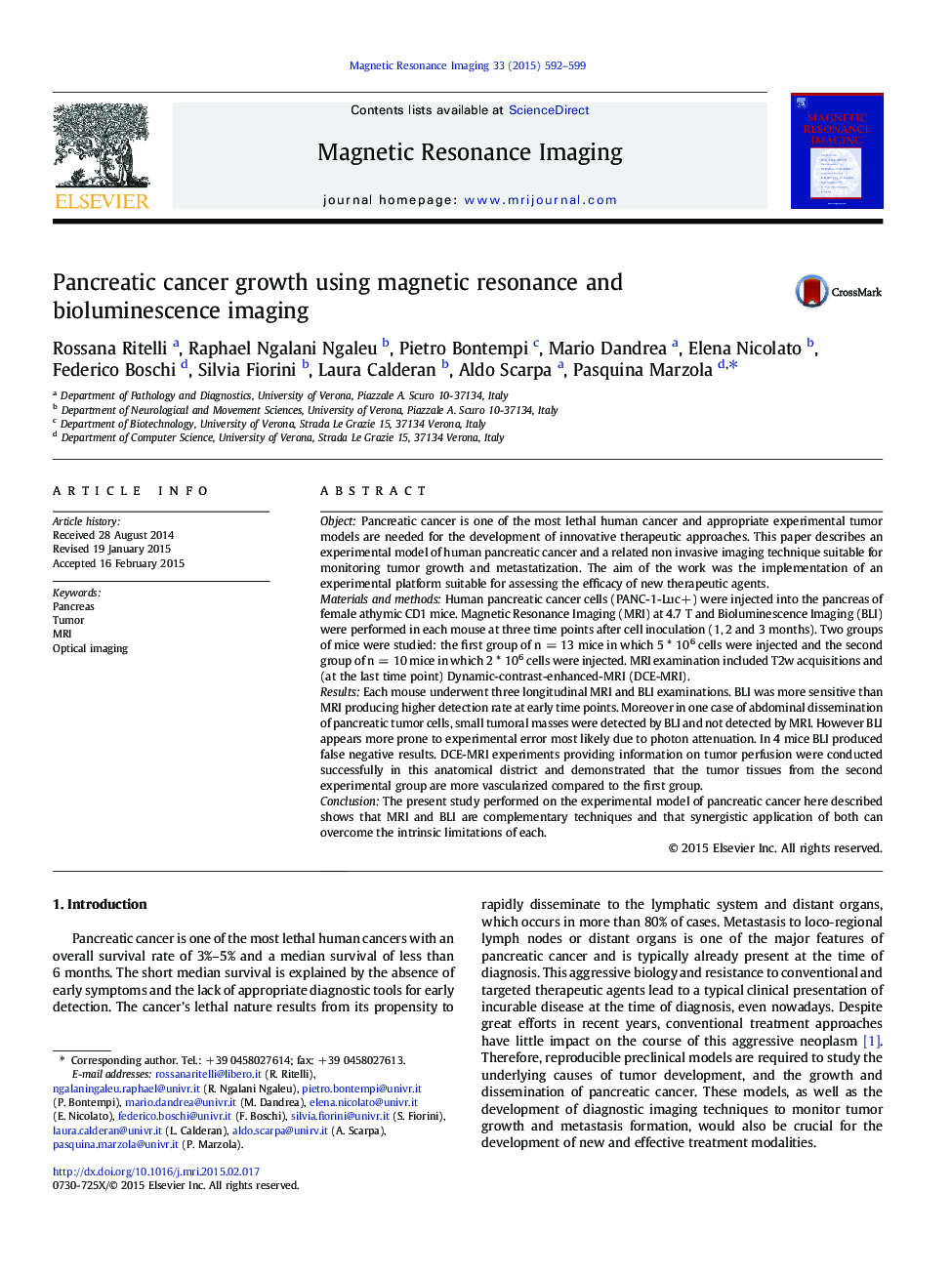| کد مقاله | کد نشریه | سال انتشار | مقاله انگلیسی | نسخه تمام متن |
|---|---|---|---|---|
| 1806282 | 1025194 | 2015 | 8 صفحه PDF | دانلود رایگان |
ObjectPancreatic cancer is one of the most lethal human cancer and appropriate experimental tumor models are needed for the development of innovative therapeutic approaches. This paper describes an experimental model of human pancreatic cancer and a related non invasive imaging technique suitable for monitoring tumor growth and metastatization. The aim of the work was the implementation of an experimental platform suitable for assessing the efficacy of new therapeutic agents.Materials and methodsHuman pancreatic cancer cells (PANC-1-Luc +) were injected into the pancreas of female athymic CD1 mice. Magnetic Resonance Imaging (MRI) at 4.7 T and Bioluminescence Imaging (BLI) were performed in each mouse at three time points after cell inoculation (1, 2 and 3 months). Two groups of mice were studied: the first group of n = 13 mice in which 5 * 106 cells were injected and the second group of n = 10 mice in which 2 * 106 cells were injected. MRI examination included T2w acquisitions and (at the last time point) Dynamic-contrast-enhanced-MRI (DCE-MRI).ResultsEach mouse underwent three longitudinal MRI and BLI examinations. BLI was more sensitive than MRI producing higher detection rate at early time points. Moreover in one case of abdominal dissemination of pancreatic tumor cells, small tumoral masses were detected by BLI and not detected by MRI. However BLI appears more prone to experimental error most likely due to photon attenuation. In 4 mice BLI produced false negative results. DCE-MRI experiments providing information on tumor perfusion were conducted successfully in this anatomical district and demonstrated that the tumor tissues from the second experimental group are more vascularized compared to the first group.ConclusionThe present study performed on the experimental model of pancreatic cancer here described shows that MRI and BLI are complementary techniques and that synergistic application of both can overcome the intrinsic limitations of each.
Journal: Magnetic Resonance Imaging - Volume 33, Issue 5, June 2015, Pages 592–599
